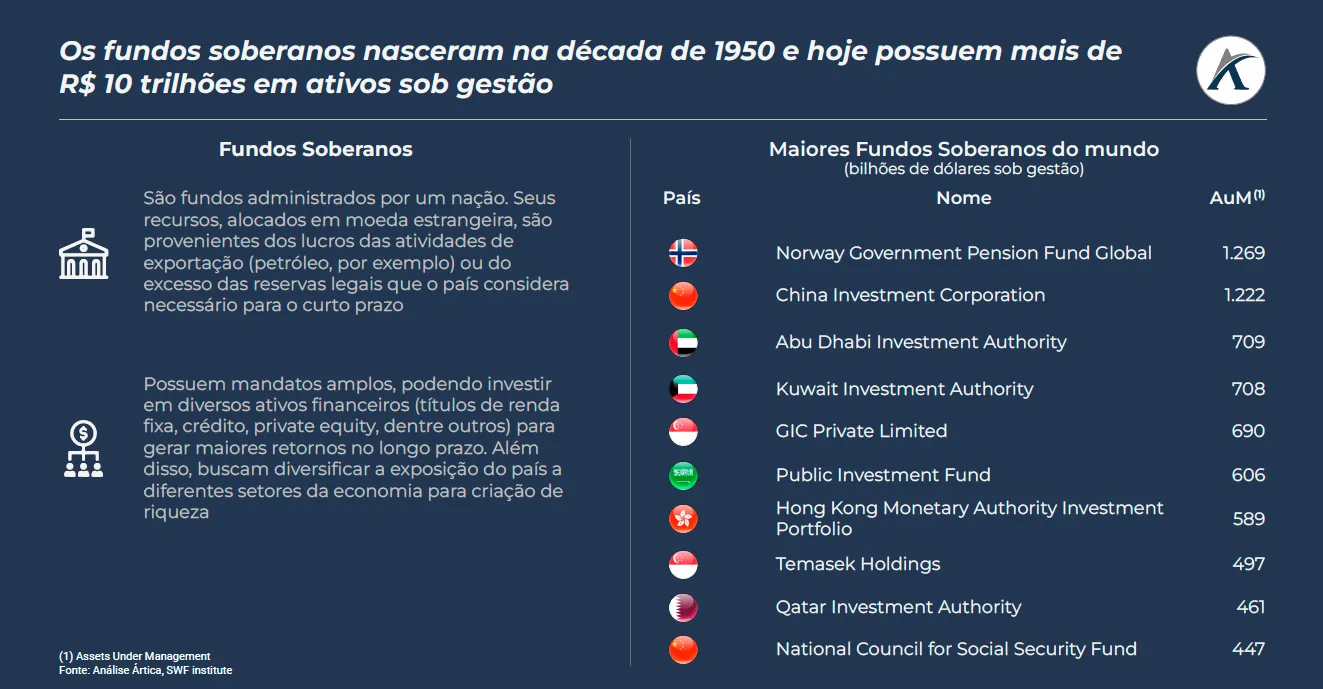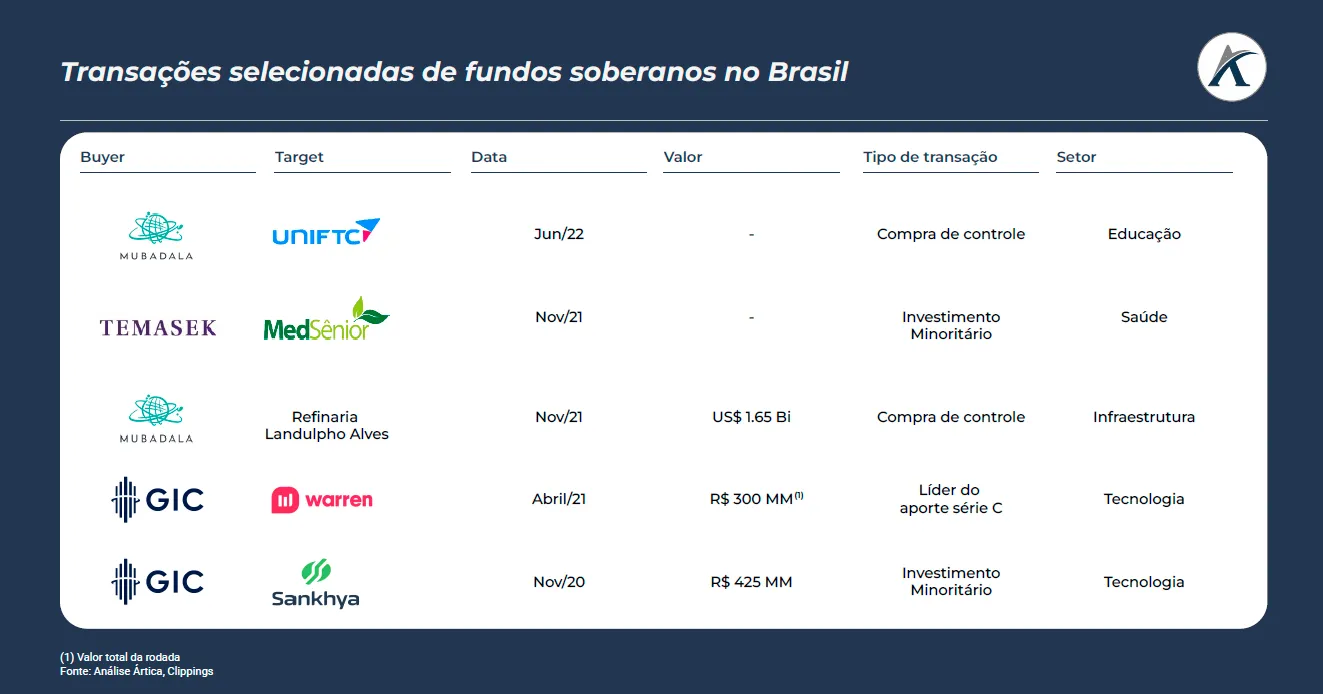Among the various types of funds on the market, there is one category that has been rapidly increasing in size and number, particularly since the 2000s: sovereign wealth funds. These funds date back to the 1950s, when the Kuwait Investment Authority was created with the aim of investing profits generated by oil extraction to reduce the country's dependence on oil. Today, there are more than 100 sovereign wealth funds, mostly from Asian countries, managing over US$10 trillion in assets.
Sovereign Wealth Funds have unique characteristics: they are administered by a country's federal government, originate from profits from commodity exports (oil-exporting nations are a classic example) or from the transfer of part of the nation's international reserves to a specific vehicle, and have very broad mandates, both in relation to the type of assets and the investment risk, with the objective of seeking higher returns in the long term.
Due to their characteristics, these funds are increasingly involved in direct investments, making them operate similarly to private equity or venture capital. This broadens the range of investors that can be considered when discussing a transaction.







